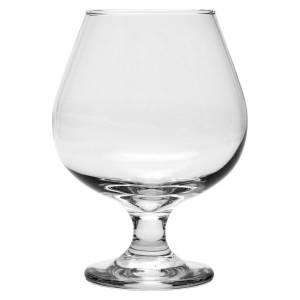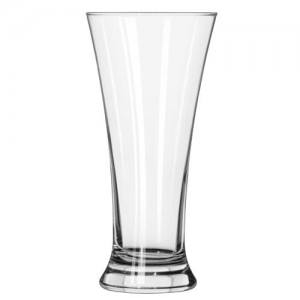Whose Glass is Whose?

In some bars, craft beer bars especially, there are a wide variety of glass vessels available for you to drink your beer from. But, in ordinary bars, it is rare that we get given the style of glass that compliments the style of beer we are drinking. Each style of glass is created purposefully to enhance the flavours, aromas and the appearance of a certain style of beer, and each has its own unique name. Did you know, for example, that the large brandy style beer glasses are called snifters?And are created to capture the complex aromas of strong ales and heavier beers.
Here we've unraveled the reasoning behind some of the most popular beer glass designs around the world. So read on, improve your beer knowledge and add something to your pub quiz and trivia arsenal.
Snifter

The wide bowl in this glass allows for more aromas to be released from the beverage, with the slimmer rim of this glass concentrating them and, in succession, enhancing the flavours of the beer. It can also make many people look, sometimes oddly, upper class and thus slightly foolish.
Designed For: High alcohol content beers, strong ales, imperial stouts, barley wine and wheat wine.
Stange

The stange is a traditional German glass, where the word stange meaning "stick"; thus it is tall and slender. Usually reserved for serving Kolsch in Cologne, these glasses can be on the small side, only holding around 200ml. This is to ensure that the beer is drunk at the correct temperature, thus reducing the chance of losing the delicate flavours found within to a minimum.
Designed For: German Kolsch, however many delicate and lighter brews will have their flavours enhanced by this style of glass, and the methods of serving and drinking that go with it.
Weizen
These glasses stand a head above the rest at the bar (literally) and are very similar to the pilsner glass (below). Their long curvaceous bodies are designed to enhance the colours and aromas of wheat beers, as well as to help the head stay solid and creamy for longer. The rim is wider than the base, allowing for the release of aromas. They also tend to hold more volume than a pint glass so that they can incorporate the large thick heads produced by these types of beer. Many come garnished with a slice of either orange or lemon; hold on this though as it will kill that beautiful head.
Designed For: Wheat beers
Goblet

Sounding medieval, and glancing back that way in style, the goblet also goes by the name of the chalice; a chalice being thick-walled, low brimmed and heavy, with the traditional goblet being taller and more delicate. Many are designed to maintain the head of your beer, accomplished by scoring the inside of the bottom of the glass, creating C02 nucleation point, resulting in perfect head retention. These are excellent for releasing the many aromas found in stronger, heavier beers, although not as great at capturing them as the snifter.
Designed for: Stronger, heavier beer and ales
Nonic

The Nonic is your standard pint glass that can be found in many pubs around the world. Unfortunately it isn’t really designed to do anything spectacular to the flavours, aromas or appearance of your beer; instead, it is built for its usability by the establishment and you, the patron: easier to grip, easier to store and stronger (“No Nicks” is how it got its name). These glasses will hold your beer well but unfortunately they won’t do anything (good or bad) for the flavour.
Designed For: All beer and ales, but above all to give you that real pub feel.
Shaker
This straight-edged pint glass was created in America to fit snuggly into a cocktail shaker. Whilst being an excellent vessel for cocktails and an excellent device for shaking them, beer does not need to be shaken and the shaker, much like the nonic, is poor at adding anything to the flavour of your beer. It is another saviour for the establishment because it is extremely sturdy. So next time your barman reaches to pour your favourite craft brew into a shaker, do yourself (and your beer) a “flavour” and ask him for a glass that is a little more redeeming.
Designed For: Cocktail making, but lagers and lighter beers are most suited to it.
Pilsner Glass

Named functionally, this glass was created to show off the crisp beauty of the pilsner beer. These glasses are tall and slender, wider at the rim than at the base, showcasing the beers colour and clarity, and allowing you to watch those crisp bubbles rise through it. Many are also tapered to help maintain, and to show off, the long lasting head of the beer. There is also a stemmed version of this glass in Germany, called a pokal, and, in style, it looks very similar to a champagne flute.
Designed For: Pilsner!
And the list goes on!






